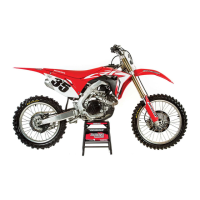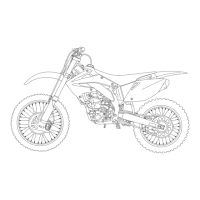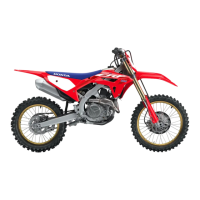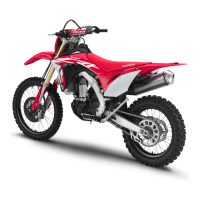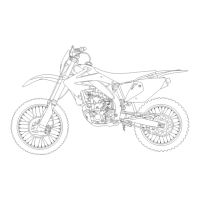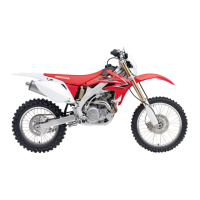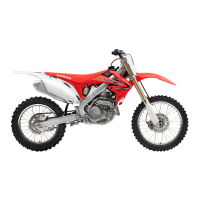
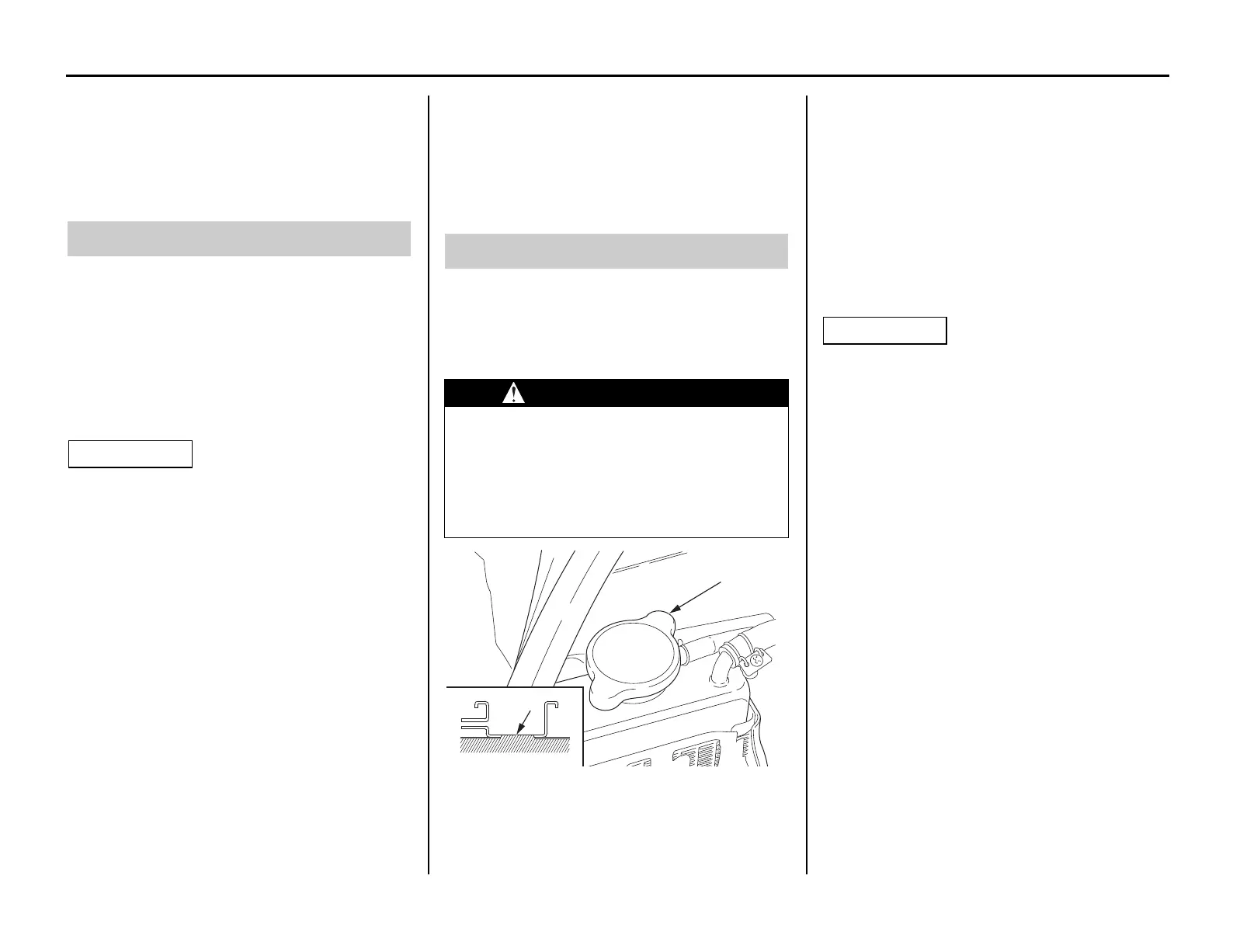 Loading...
Loading...
Do you have a question about the Honda CRF450R 2011 and is the answer not in the manual?
| Engine Type | 449cc liquid-cooled single-cylinder four-stroke |
|---|---|
| Bore x Stroke | 96.0mm x 62.1mm |
| Compression Ratio | 12.0:1 |
| Transmission | Close-ratio five-speed |
| Final Drive | #520 chain; 13T/48T |
| Front Brake | Single 240mm disc with twin-piston caliper |
| Rear Brake | Single 240mm disc |
| Front Tire | 80/100-21 |
| Rear Tire | 120/80-19 |
| Trail | 114mm (4.5 inches) |
| Induction | PGM-FI, 46mm throttle body |
| Front Suspension | 48mm inverted with rebound and compression damping adjustability; 12.2 inches travel |
| Rear Suspension | Pro-Link single shock with rebound and compression damping adjustability; 12.4 inches of travel |
| Wheelbase | 58.7 inches |
| Seat Height | 37.6 inches |
| Fuel Capacity | 1.5 gallons |
Explains safety alert symbols and signal words (DANGER, WARNING, CAUTION).
Provides essential precautions for safe operation and maintenance.
Guides on ensuring rider readiness and understanding controls.
Details checks to ensure the motorcycle is safe for riding.
Lists essential checks to perform before every ride.
Details procedures for starting, stopping, and handling engine issues.
Covers maintenance and adjustments for the engine components.
Details maintenance and adjustments for the motorcycle chassis.
Explains throttle freeplay, adjustments, and inspection procedures.
Details how to adjust the engine's idle speed for optimal performance.
Covers clutch lever adjustment, freeplay, and disc/plate service.
Guides on inspecting front suspension components for wear or damage.
Details how to inspect the rear shock absorber and swingarm bearings.
Explains how to adjust the front brake lever for comfort.
Guides on adjusting the rear brake pedal to the correct height.
Covers adjustments for front suspension air pressure, damping, and springs.
Details adjustments for rear suspension spring pre-load and damping.
Offers advice on engine tuning using spark plug readings.
Explains how to adjust the steering damper for optimal control.
Covers adjustments for rear end, fork height, and wheelbase.
Explains how gearing changes affect power delivery and track performance.
Details how to adjust front fork air pressure for ride conditions.
Explains how to adjust compression and rebound damping.
Guides on adjusting spring pre-load for proper ride height.
Explains adjustments for rear suspension high and low speed damping.
Presents flowcharts to diagnose and resolve common operational issues.
Provides a comprehensive list of torque values for various fasteners.
